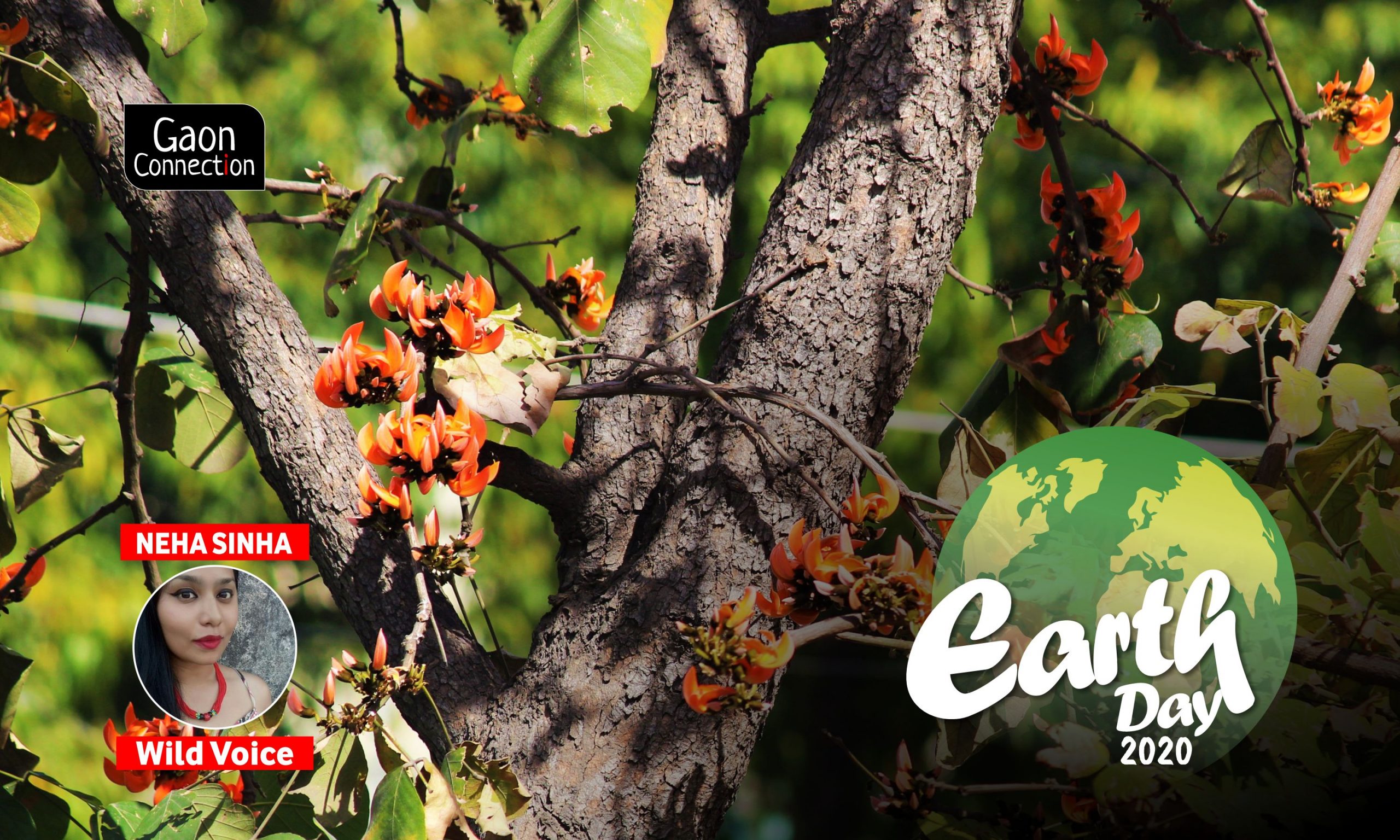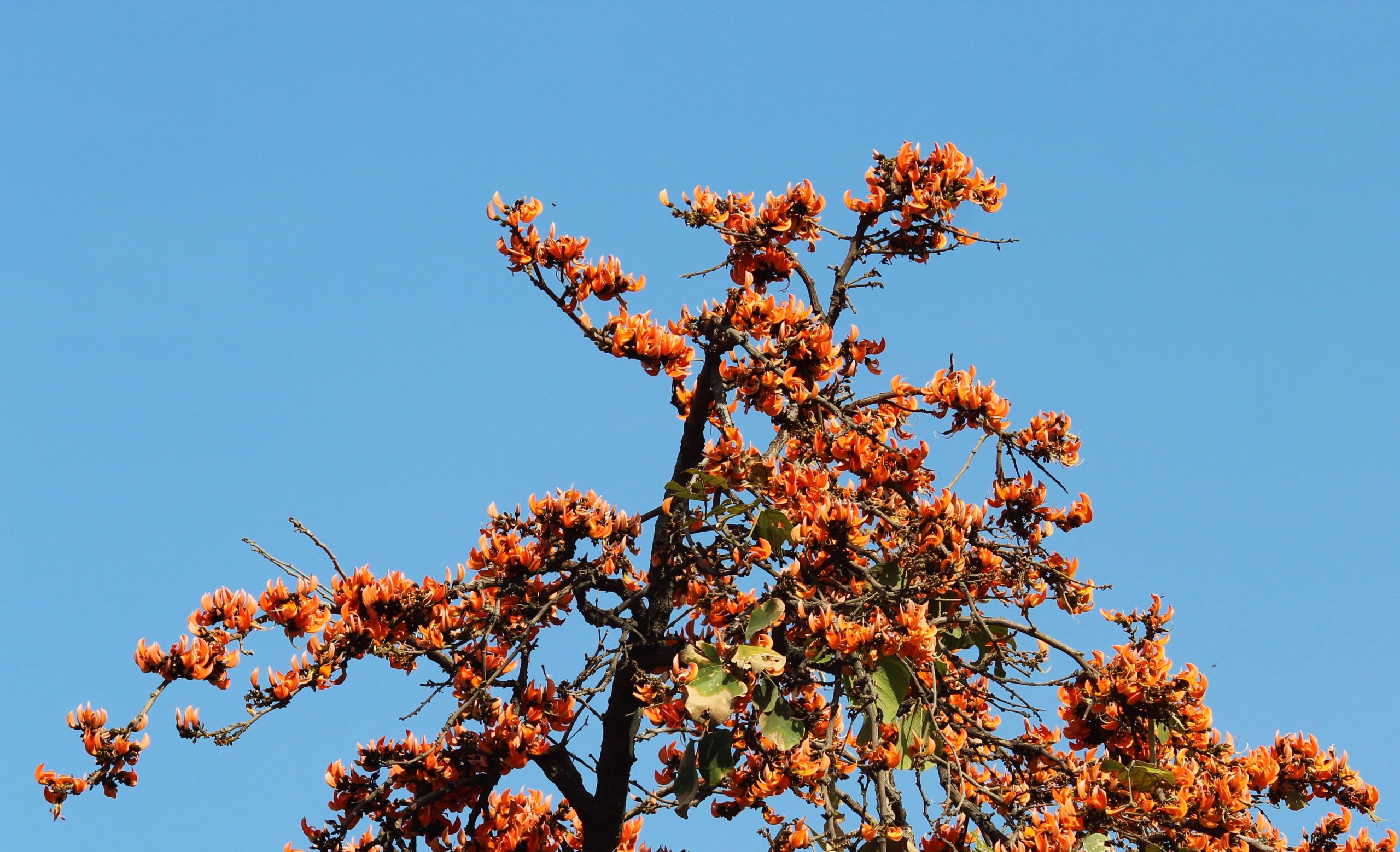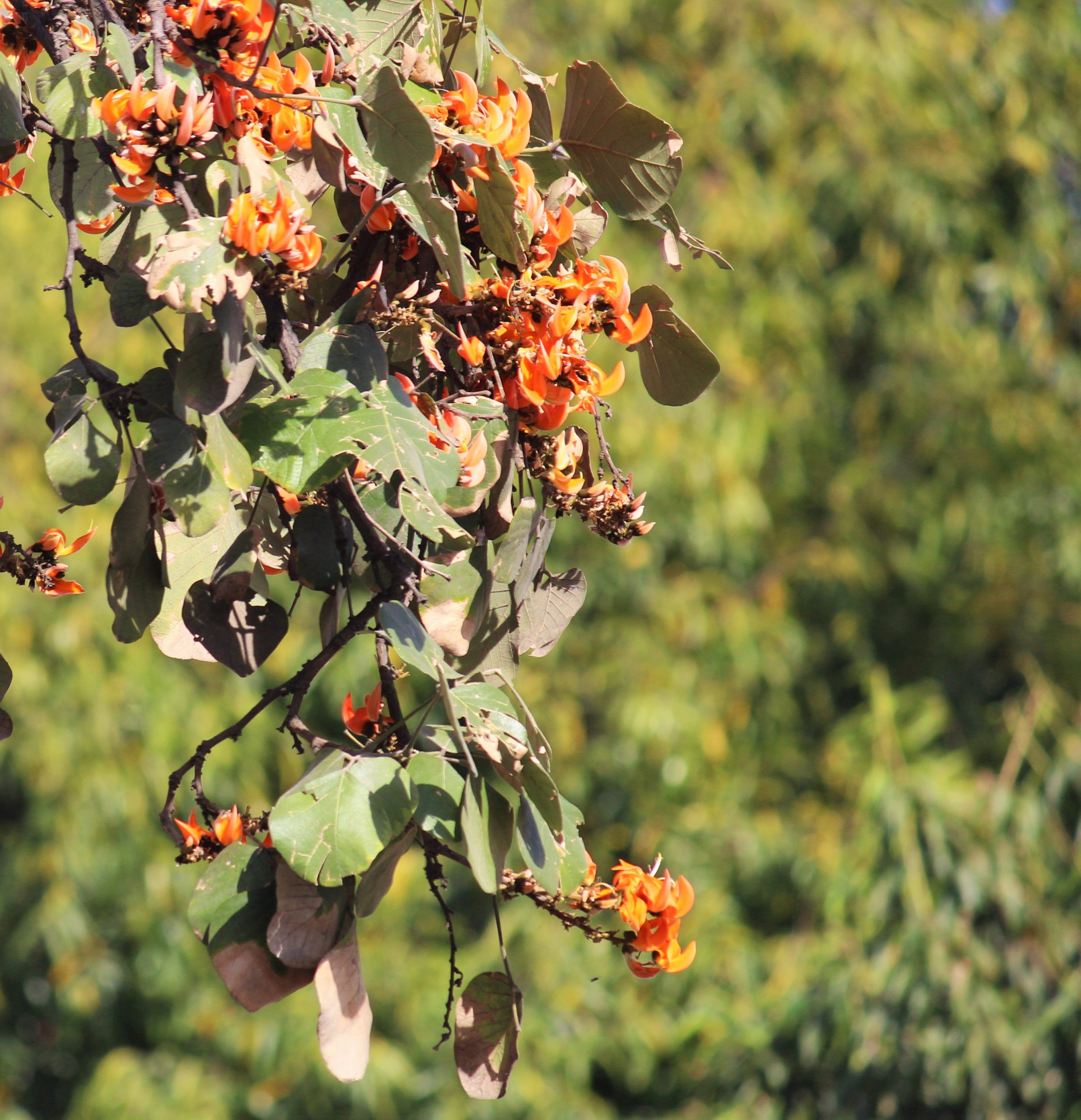Just the memories of a palash tree in its blazing glory makes the spring of the lockdown bearable
Confined to my home with nowhere to go, I take a trip back in time to the tea stall in Madhya Pradesh where I first saw the fiery blooms of the palash tree.


All highways in India often look the same. A grey road, a feeling of getting somewhere, dust in the air — in your hair, on your tongue. A dog or two. A roadside tea stall, selling everything from authentic masala tea to mysterious versions of “buns”. People lingering in the tea-stall, flies buzzing, mynahs poking around at your feet for crumbs. I was on such a highway in Madhya Pradesh, and had just stopped for tea. Summer hung heavy over us, making the air still and oppressive and each step felt like one was wading through something thick and impenetrable. But tea is perhaps the only hot drink you can have without feeling hot. I had reached out for the tea. And I realised then, that while everything looked just the same as any other highway, one thing stood out, blazingly, blindingly different.
A medium-sized tree with crooked branches stood next to the tea-stall. The shape of the tree could not be called beautiful. It was glorious in its asymmetry. And that asymmetry was highlighted by what was on the branches. Orange-licks of flame-shaped blossoms, tumbling over each other, crowding each branch, pushing each other like notes of a glorious song carrying a single tune together. The orange flowers of the Palash are tipped with a paler hue, and shaped like a leaping flame. The whole tree looks like it can sizzle any second. The tree was alive, like a gif that would animate any second; a bird that would shake its feathers and fly off. This is the flame of the forest, a tree named so because it seems to set the forest on fire with its beauty, all the more showy because it blossoms at a time when the rest of the forest is a dull brown and worn green.
As I watched the tree, so many other things watched me. A purple sunbird came on the flowers, gleaming purple-blue-green-purple amongst the orange flame-petals. It dipped into the flowers for nectar with its long beak. Then, a much less flashy bird went hopping up the flowers. This was the Brown-capped pygmy woodpecker. A second later, Grey hornbills came on the Palash. The proximity of the tree to people eating and drinking didn’t seem to affect the birds. They were intoxicated by the flowers.

Cut to Delhi. Palash is an Indian tree, mostly found in drier parts of India. It grows slowly, but doesn’t mind scathing loo winds that pick everything dry, or undernourished soils. And so, the Palash grows even in the most polluted regions of India. But perhaps the fact that it needs patience from us has led to other trees being favoured for plantations in the city. You have trees like the showy laburnum with its eye-popping yellow chandelier like flowers; you have the pretty red-and-yellow Gulmohar, the fast growing Semal—all these trees are seen in cities more than the Palash. Trivia says Plassey is the bastardised name of Palashi, named after its Palash trees. But Plassey now has hardly any Palash.
So, to find blooming Palash I have gone to sides of forests, forgotten highways, and that great mass which may not be plotted on google earth – village squares, places between villages, the greater rural countryside. There is only one time when one can see the tree flaming, and that is onset of summer — the end of spring.
For the few blooming Palash I have regular access to — a handful of trees in Delhi, and some more in Central Indian forests, I wait all year long.
But 2020 is not like any other year. This is the year of the pandemic. As Spring blossomed, India was forced into a lockdown to escape the deadly grasp of a non-living micro-organism. A virus that had twisted destinies, taken lives and left scars for all time to come. I could not go to places in Delhi, let alone those in Central India.

The blow of the lockdown is not the actual inconvenience of being hemmed in; household chores poking you from all directions. It is the absence of choice. You may be happy to do the same chores if you chose to do so; happy to stay home willfully; but when you are told to do so, it feels like work.
Used to being outdoors every day, I felt plastered into the walls of home. I was not a free bird, but a brick in the wall. I knew that a few kilometres away, Palash were putting forth the music of their blossoms, old trees with new flowers, worn trunks whispering with excitement. I was trying to adjust myself and think like a tree does. What was one year? Not so much, after all. Next year I would be able to see the Palash.
Straightening myself into this forced understanding, I went to get some medicines. It was the first time I had stepped out in days. As I turned my car on a large road, having made my purchases, something made my heart stop. It was a blossoming Palash. Flowers were out on a small tree, growing in a dusty central verge. I had never noticed the tree before, looking at avenue trees at the sides of roads instead.
The young tree had carpeted the ground with orange. A purple sunbird whizzed into the branches, searching for nectar. A crow came and settled in the heart of the tree. A female sunbird darted on a wire next to the blossoms, soon to dive in.
For a few minutes, I was far from coronavirus and a sickened country, and back to the tea-stall in Madhya Pradesh where I had first seen the Palash. There were no pygmy woodpeckers in Delhi as they were in my memories from MP, but the tree seemed to be the key to understanding that life was still flourishing. And that even during a lockdown, you can move from place to place holding the petal of a flower. That tree swathed in flames was a brief escape to wonder in a world currently full of worry. But though I had to leave, this understanding stayed with me: life would always go on. Sometimes, you need a flower to tell you that.
Neha Sinha is working with the Bombay Natural History Society.
(Views are personal)

